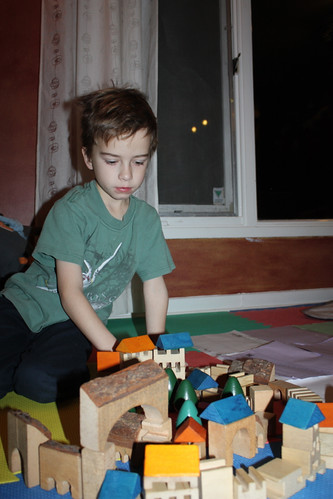A few weeks ago I went to a meeting of the Beaverbrook community association to do with proposed mid-rise to be built on Teron road. I have been wanting to write about the meeting but there are so many angles to cover that eventually I got bored with the topic and started thinking about bicycles instead. That is not to say that I do not want to talk about the intensification of my neighbourhood.
First of all, I do not like suburbs. I live here because it is the most sensible place to live given our situation. Despite this, I do enjoy living in a suburb and I am particularly fond of Beaverbrook. However, I am not fond of Beaverbrook because it is low-rise. There are a lot of other suburbs in Ottawa that are low-rise and I am not terribly fond of them. I am fond of Beaverbrook because it is well architected. No, it is not nature, it is architecture that makes it special. Nature is when we don’t mow our lawn for two months in the summer and I am willing to bet that our low-rise insisting neighbours do not look too kindly on that.
There is certainly a benefit to fighting for your community to preserve a particular look, especially when that neighbourhood is as highly regarded as ours. I just really don’t like the approach and the tone the neighbourhood association has taken. I approve of challenging developers and working with the city to set and enforce the limits, but I do not approve of the low rise at any cost demands and I can’t in good conscience object moderate intensification even if I don’t like it aesthetically.
If it was up to me, I would actively recruit developers that have as much talent and vision as Teron had back in the 60’s. The only problem I have with the proposed seven story condo building to be going up on Teron road is that it is boring. It looks like every other condo building built in Ottawa over the last 5 years. I bought into Beaverbrook that was designed by someone who knew how to make a neighbourhood look and feel special. There are architects out there that can make seven or ten or even fifteen storey condo building look special and embody a vision people would want to buy into just as people bought into the original Beaverbrook concept. I just wish that someone could hire the right kind of developers and make sure that Beaverbrook remained special for a long time to come. Hope springs a turnip.
